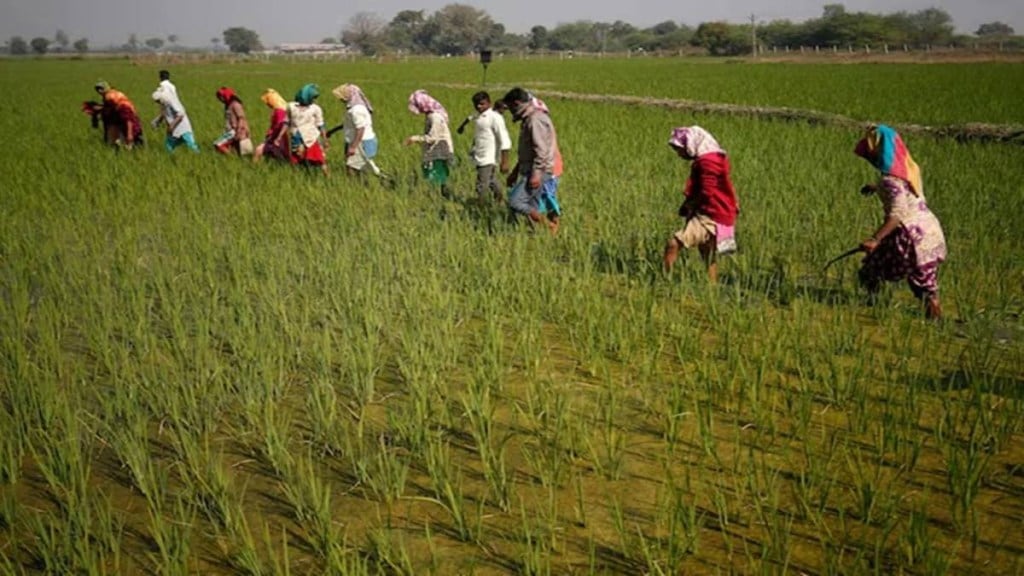Ashok Gulati & Ritika Juneja, Respectively distinguished professor and research fellow, ICRIER
On October 16, the global community observed World Food Day under the theme “Hand in Hand for Better Food and a Better Future”, marking the 80th anniversary of the Food and Agriculture Organization. This theme underscores the collective responsibility to transform our food systems through collaboration among nations, businesses, farmers, policymakers, and scientists. Central to this transformation is regenerative agriculture—a holistic approach that restores soil health, enhances biodiversity, builds climate resilience, and promotes nutritional security.
This call for action could not be more urgent. Humanity’s footprint on this planet has grown exponentially, especially over the past two centuries. It took nearly 300,000 years for homo sapiens to reach a population of a billion by 1804, but only 123 years to reach two billion by 1927. The pace then quickened dramatically—humans multiplied by four times in less than 100 years, and today, it hovers around 8.2 billion. This rapid expansion has placed immense strain on this planet’s finite resources. Only 29% of Earth’s surface is land, and a mere 10.7% of that is cultivated. Soils, water, and ecosystems everywhere are under mounting pressure from overuse, pollution, and climate change.
India is fortunate to have 52% arable land. Yet, a rising population has depleted natural resources and led to environmental degradation. It threatens the long-term sustainability of agriculture—a sector that employs nearly 46% of India’s workforce. These intertwined challenges demand systemic solutions that no single actor or discipline can tackle alone. That is why innovation and collaboration must go hand in hand. Innovation generates new products and practices; collaboration ensures they are scaled up and adopted effectively through partnerships. Together, with the right policies, the four Ps—policies, products, practices, and partnerships—can pave the way for true transformation.
India’s journey from a food-deficit nation in the 1960s to the largest exporter of rice today stands as a powerful example of what the four Ps can achieve. The technological breakthroughs in high-yielding varieties of wheat by Norman Borlaug and his team at the International Maize and Wheat Improvement Center and rice by Henry Beachell and Gurdev Khush at International Rice Research Institute ushered in the Green Revolution, ensuring global food security. Borlaug’s pioneering work earned him the Nobel Peace Prize in 1970 for saving millions of lives from famines.
These achievements were reinforced by the innovative Haber-Bosch process, developed by Fritz Haber and industrialised by Carl Bosch, which enabled the mass production of synthetic fertilisers and boosted crop yields worldwide. Both scientists received Nobel Prizes for their contributions. This was further complemented by the expansion of irrigation systems and policies that supported prices. However, the very innovations that once averted mass starvation led to new challenges. In India, excessive and imbalanced use of fertilisers, caused primarily by the distorted pricing of nitrogen, phosphorus, and potassium fertilisers, has degraded soils, increased greenhouse gas emissions, and contaminated groundwater.
Today, India’s soil is in distress. The country’s average soil organic carbon level is below 0.3%, far short of the minimum 1% recommended by experts like Rattan Lal and RS Paroda. In regions such as Punjab, Haryana, and Rajasthan, soils are so depleted that they would figuratively need admission to an “intensive care unit”. Restoring soil vitality is no longer optional, it is an ecological and economic imperative. What we need is a mission on regenerative agriculture for sustaining the nation’s agricultural future.
India’s flagship innovation initiatives such as the Atal Innovation Mission and the Anusandhan National Research Foundation are still evolving, with substantial breakthroughs yet to materialise. In contrast, the private sector has already taken proactive steps toward scaling up regenerative agriculture. On October 15, a seminar titled “Innovations for Regenerative Agriculture—Indian and Global Experiences” was co-hosted by AgVaya (an India-based advisory firm specialising in agriculture and food-value-chain transformation) and BioSTL (a non-profit based in St. Louis, US, focused on biosciences and agri-innovation), with ICRIER serving as knowledge partner.
The journey of innovation often begins in the most unassuming places. Pramod Bhasin (ICRIER Chairperson) pioneered the business process outsourcing with the transformative idea germinating in a parking lot in Chennai. The launch of Global AgXelerate on October 15 exemplifies this spirit of innovation. This platform aims to connect agricultural innovators with global markets, fostering growth and transformation in the sector. Such initiatives highlight that with the right support significant advances can stem from modest beginnings.
As nutrition serves as a central focus within regenerative agriculture, India must prioritise nutritional security by increasing domestic production of pulses and oilseeds—crops that require fewer inputs and naturally fix nitrogen in the soil. To address this, the government has launched the Rs 11,440-crore “Mission for Atmanirbharta in Pulses” (2025-26 to 2030-31), aiming to scale up pulse production to 350 lakh tonnes.
Achieving self-sufficiency in pulses and oilseeds requires innovative policies that promote crop-neutral incentives. Unless pulses and oilseeds receive similar incentives and market support like rice and wheat, it may be tough to realise the dream of “atmanirbharta”. Also, sizeable investments in agri-R&D are key to greater productivity and resilience.
The success of the government initiatives hinges on effective implementation and active participation of farmers and stakeholders across the agri-value chain. Self-sufficiency in pulses and oilseeds will not only improve India’s nutritional security but also start regenerative agriculture. It will heal our soils, save the groundwater and air from pollution, and promote biodiversity.
Views are personal

